For beginners wondering where to aim darts, the simple answer is the **20 segment**. Consistently hitting that will drastically improve your score. This article delves into the nuances of target selection, advanced strategies, and techniques to help you maximize your dart game.
⚠️ Still Using Pen & Paper (or a Chalkboard)?! ⚠️
Step into the future! The Dart Counter App handles all the scoring, suggests checkouts, and tracks your stats automatically. It's easier than you think!
Try the Smart Dart Counter App FREE!Ready for an upgrade? Click above!
Understanding the Dartboard: Your Target Landscape
Before diving into specifics of where to aim darts, it’s crucial to understand the dartboard itself. The standard dartboard is divided into 20 numbered sections, each wedge-shaped. The most common target for new players is the 20 segment, as it yields the highest single-dart score. Familiarize yourself with the layout of the board; understanding the placement of high-scoring segments and the penalty zones (like the single 1 and 5 next to the 20) will dramatically improve your strategic game.
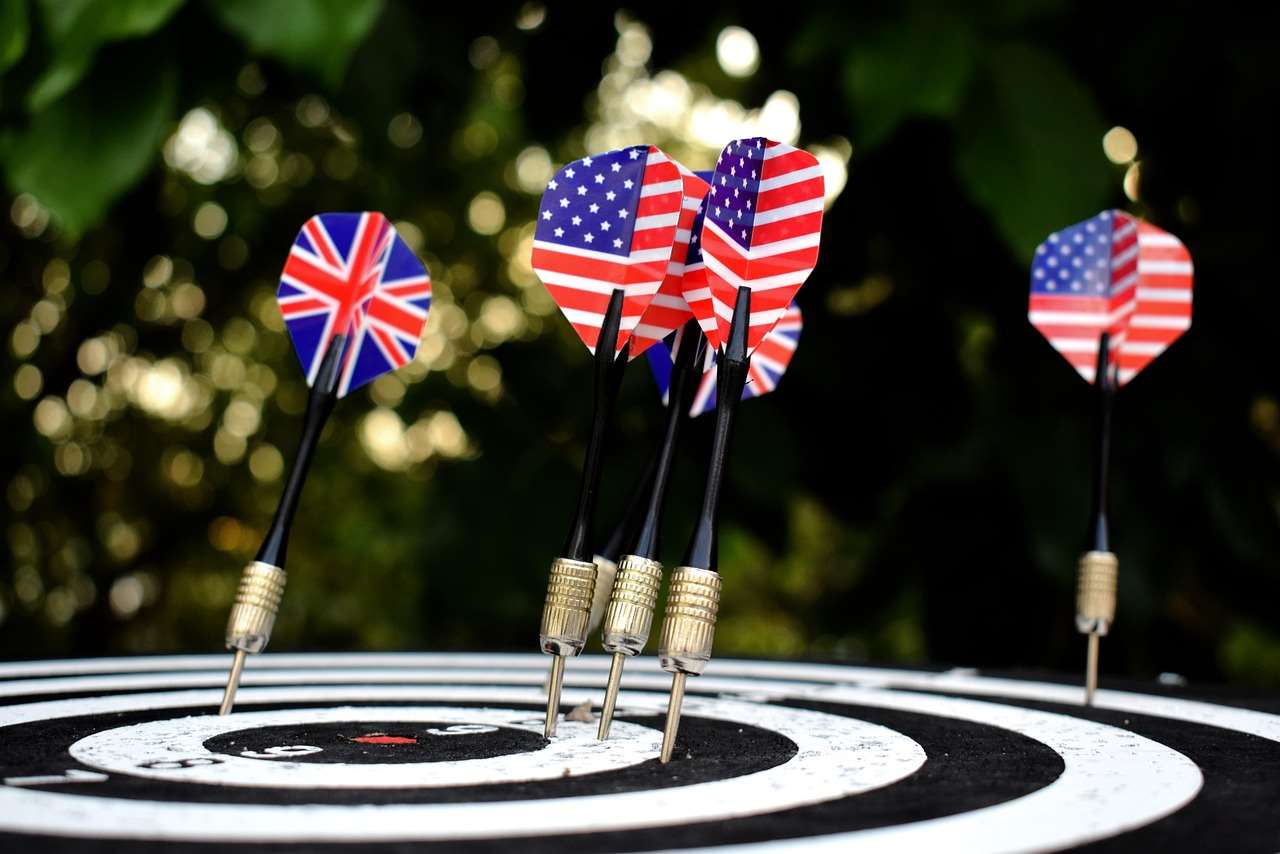
Basic Strategy: Targeting the 20
As mentioned, the 20 segment is the cornerstone of a good darts strategy. Aiming for the treble 20 (the inner ring of the 20 segment) scores 60 points, the highest possible score with a single dart. Consistently hitting the treble 20 is difficult, especially for beginners, so starting with a focus on the larger single 20 is a great starting point. As your accuracy improves, you can gradually shift your aim to the treble.
Consider the trajectory of your darts. Are they landing slightly left or right of your intended target? Make small adjustments to your stance, grip, and throw to compensate. This is all part of dialing in your accuracy and understanding where to aim darts with your specific throwing style.
Why the 20?
- Maximum Point Potential: Hitting the 20, treble 20, or double 20 provides the best opportunity to quickly reduce your score in games like 501.
- Consistency Building: Practicing on the 20 helps develop muscle memory and a consistent throwing motion.
- Strategic Advantage: Even if you don’t hit the treble, a single 20 is still a respectable score.
Beyond the 20: Alternative Scoring Zones
While the 20 is a primary target, relying solely on it can be limiting. Understanding when and where to aim darts in other areas of the board is crucial for strategic play. Sometimes, “covering” numbers – protecting them to ensure they can be finished or aimed for in the next throw – comes into play. The darts game bar down the street likely has some seasoned players who can give you in-person tips!
Here are some alternative scoring zones and when to consider them:
- The 19: Located next to the 3 and 7, the 19 can be a useful alternative if you are struggling with the 20. While it scores one point less, consistency is key, and it provides a bigger target.
- The 3 and 17: While not primary scoring targets, understanding their location is important because they flank the 20. Missing slightly left or right of the 20 might lead to a frustratingly low score of 3 or 17.
- The Bullseye (50 points): The bullseye offers a decent score and can be a good option when you need to close out a game quickly, especially in scenarios where you need a specific number close to 50.
Mastering the Finish: Doubles and Checkout Strategies
The ability to finish a game efficiently is just as important as scoring well. In most dart games, the final dart must land in a double or the bullseye to win. Therefore, knowing where to aim darts for specific doubles is crucial.
Popular doubles to target include:
- Double 20: Often the first choice as it’s a natural progression from aiming for the single or treble 20.
- Double 16: A good alternative if you miss the double 20; it sets you up for another shot at a finish.
- Double 8: Useful for finishing scores like 16.
- Double 4: Great for closing out at 8.
Familiarize yourself with common checkout combinations and practice hitting the corresponding doubles. Several practice darts app with scoring (https://dartcounterapp.com/) apps can help you learn and drill these checkout patterns.
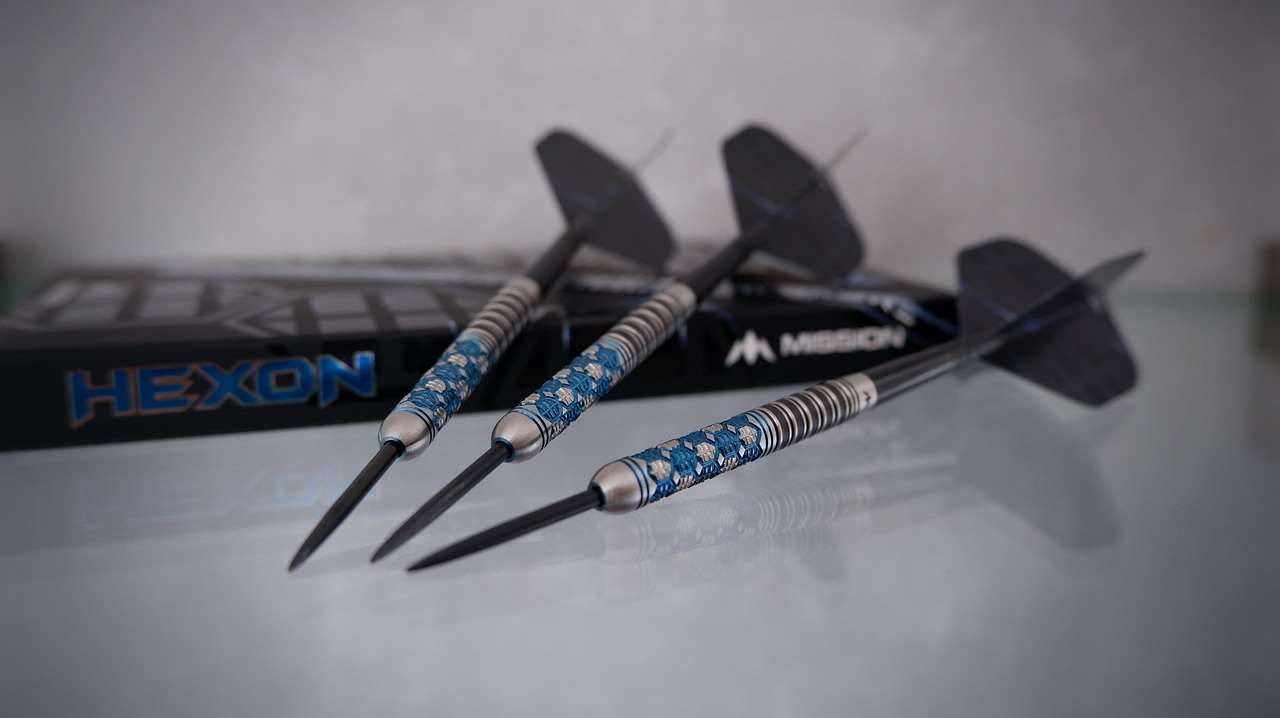
Advanced Dart Trajectory and Aiming Techniques
Beyond basic aiming, understanding dart trajectory and making subtle adjustments can significantly improve your accuracy. This includes considering factors like dart weight, flight shape, and your individual throwing style.
Consider these advanced techniques:
- Sight Alignment: Focus on aligning your eye, the dart, and your target. This creates a visual guide for your throw.
- Release Point: Pay attention to your release point. A consistent release will lead to a more predictable trajectory.
- Follow-Through: A smooth and consistent follow-through helps maintain accuracy.
- Understanding Dart Drift: Analyze the tendency of your darts to drift left or right. Adjust your aim slightly to compensate.
The Mental Game: Focus and Consistency
Darts is as much a mental game as it is a physical one. Maintaining focus, managing pressure, and staying consistent are essential for success. If you feel distracted, take a short break and refocus on your target. This helps when you’re thinking about where to aim darts.
Tips for improving your mental game:
- Visualization: Visualize the dart hitting your target before each throw.
- Positive Self-Talk: Encourage yourself and focus on your strengths.
- Deep Breathing: Use deep breathing techniques to calm your nerves.
- Stay Present: Focus on the current throw and avoid dwelling on past mistakes.
It might be useful to look up shot darts wikipedia to learn more about the best equipment.
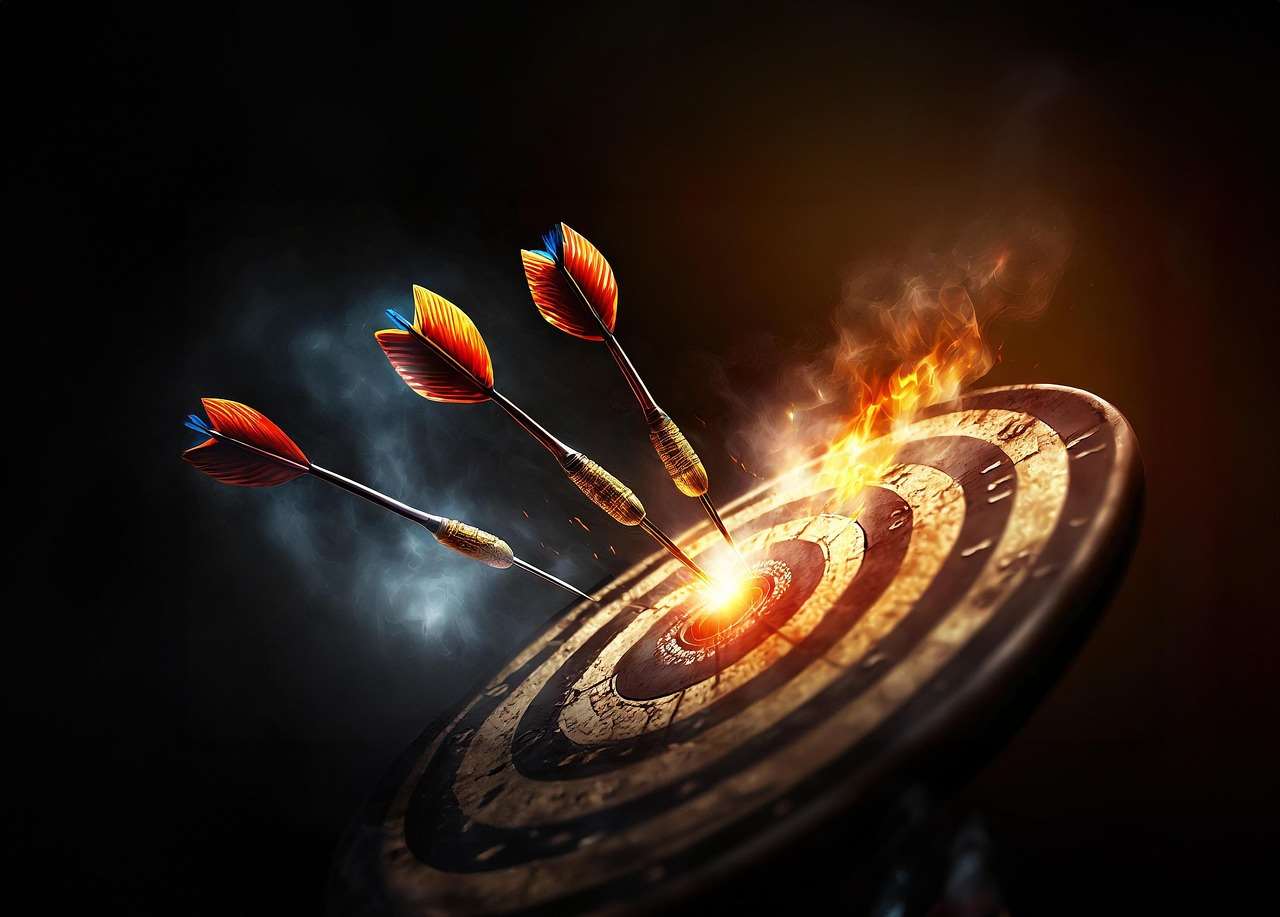
Equipment Matters: Dart Selection and Setup
The darts you use and how you set up your dartboard can impact your performance. Experiment with different dart weights, barrel shapes, and flight types to find what works best for you. Ensure your dartboard is properly mounted at the correct height and distance.
Here are some equipment considerations:
- Dart Weight: Heavier darts tend to be more stable, while lighter darts offer more control.
- Barrel Shape: Different barrel shapes can affect your grip and release.
- Flight Type: Larger flights provide more stability, while smaller flights offer more speed.
- Dartboard Height: The bullseye should be 5 feet 8 inches (1.73 meters) from the floor.
- Throwing Distance: The oche (throwing line) should be 7 feet 9.25 inches (2.37 meters) from the dartboard.
Practice Drills: Improving Accuracy and Consistency
Consistent practice is key to improving your darts game. Incorporate a variety of drills into your practice routine to target specific skills and weaknesses. Here are a few drill ideas to determine where to aim darts effectively during a game:
- Around the Clock: Start at 1 and try to hit each number in sequence, ending at 20.
- Doubles Practice: Focus solely on hitting doubles.
- Checkout Practice: Practice finishing specific checkout combinations.
- Treble 20 Challenge: See how many treble 20s you can hit in a row.
Dealing with Dartitis: Overcoming the Yips
Dartitis, often called “the yips,” is a condition that causes involuntary muscle contractions during the throwing motion. It can be a frustrating setback for even experienced players. While there’s no guaranteed cure, there are strategies to manage and overcome it.
Strategies for managing dartitis:
- Relaxation Techniques: Practice deep breathing and meditation to reduce anxiety.
- Grip Adjustments: Experiment with different grips to find one that feels more comfortable.
- Mental Imagery: Visualize a smooth and effortless throw.
- Professional Help: Consider seeking guidance from a sports psychologist.
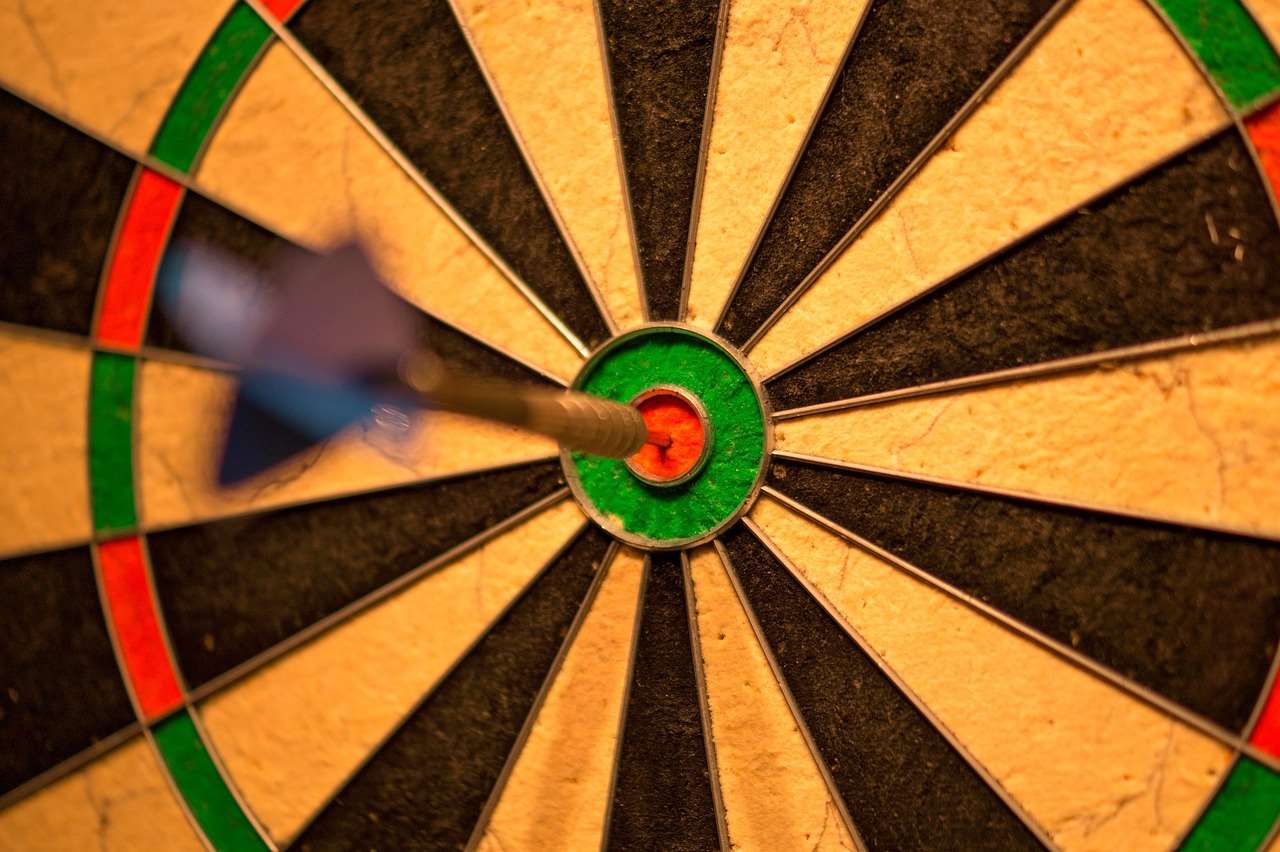
Analyzing Professional Dart Players: Learning from the Best
Watching professional dart players can provide valuable insights into technique, strategy, and mental toughness. Pay attention to their aiming points, throwing styles, and how they handle pressure situations. Often, the darts the masters 2024 tv broadcasts provide excellent slow-motion replays that can be especially insightful. Studying the professionals and their where to aim darts strategies can also help you to elevate your game.
Consider analyzing:
- Throwing Motion: Observe the fluidity and consistency of their throws.
- Aiming Techniques: Note their aiming points and how they adjust their aim based on dart drift.
- Strategic Decision-Making: Pay attention to how they choose their targets and plan their checkouts.
- Mental Toughness: See how they handle pressure and recover from mistakes.
Continuous Improvement: Tracking Progress and Adapting
Darts is a journey of continuous improvement. Track your progress, identify areas for improvement, and adapt your strategy accordingly. Keep a record of your scores, analyze your weaknesses, and adjust your practice routine to address them. This iterative process will help you refine your skills and maximize your potential.
Tips for tracking progress:
- Keep a Dart Journal: Record your scores, practice sessions, and observations.
- Analyze Your Stats: Track your averages, checkout percentages, and other key metrics.
- Set Goals: Establish specific, measurable, achievable, relevant, and time-bound (SMART) goals.
- Seek Feedback: Ask experienced players for feedback on your technique and strategy.
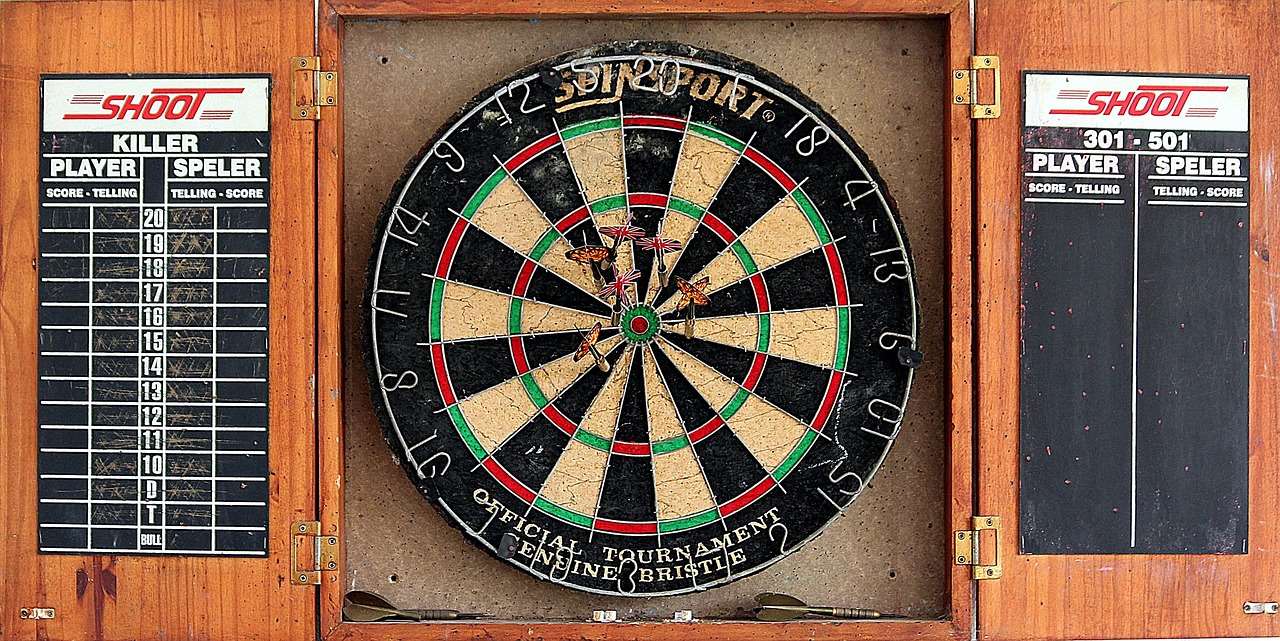
Conclusion: Mastering Your Aim and Elevating Your Dart Game
Knowing where to aim darts is the foundation of a successful darts game. While the 20 segment is a great starting point, mastering doubles, understanding alternative scoring zones, and developing a strong mental game are essential for advancing your skills. By consistently practicing, analyzing your performance, and adapting your strategy, you can elevate your dart game and achieve your goals. So, grab your darts, find your aim, and start throwing!
Ready to take your darts game to the next level? Visit our website to learn more about advanced techniques and strategies. Also, be sure to check out our recommendations for the best price of darts set available.
Hi, I’m Dieter, and I created Dartcounter (Dartcounterapp.com). My motivation wasn’t being a darts expert – quite the opposite! When I first started playing, I loved the game but found keeping accurate scores and tracking stats difficult and distracting.
I figured I couldn’t be the only one struggling with this. So, I decided to build a solution: an easy-to-use application that everyone, no matter their experience level, could use to manage scoring effortlessly.
My goal for Dartcounter was simple: let the app handle the numbers – the scoring, the averages, the stats, even checkout suggestions – so players could focus purely on their throw and enjoying the game. It began as a way to solve my own beginner’s problem, and I’m thrilled it has grown into a helpful tool for the wider darts community.